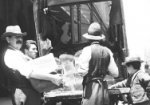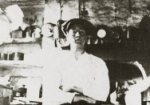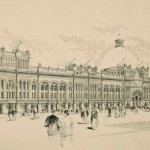Susannah Place conjures the essence of autumn, with its paint peeling, its colours fading, but leaving us with a glimmer of when the houses were busy with the daily lives of its tenants. This diminutive row of four inner-city terrace houses in Sydney’s Rocks has seen generations of change, not least revealed in its kitchens and dining spaces.
In fact the houses are an archive of the changes in domestic technology over 150 years, from candlelight to the gas lights run by penny-in-the-slot meters; from fuel stoves to gas ‘kookas’ and later, the convenience of electricity – a veritable chronology of cooking and eating in urban Sydney.
An intimate knowledge
While the Curator (Scott Hill) recovers from the excesses of all that Regency punch (!!), Anna Cossu steps in as curator for this very special, preserved rather than restored, house museum. Not only has Anna been curator of Susannah Place for seven years, she has had the unique experience of living in one of the houses, developing a very intimate and individual relationship with this property and the families who once called it home.
Spared from the slum clearances of the early 1900s and saved from the redevelopment-hungry era of the 1970s, Susannah Place opened as a museum in 1993. The memories of some of the 20th century tenants have been captured in oral history interviews and used to recreate rooms from the 1840s to the 1970s and even the 1920s corner shop. It is no surprise to me, as gastronomer, that food and meal times resonate loudly in people’s memories of time and place. In the next few weeks Anna and I (the Cook aka Jacqui Newling!) will introduce you to some of Susannah Place’s past residents, explore their kitchens, share their stories, try out some of their recipes and rediscover the tastes of their times.
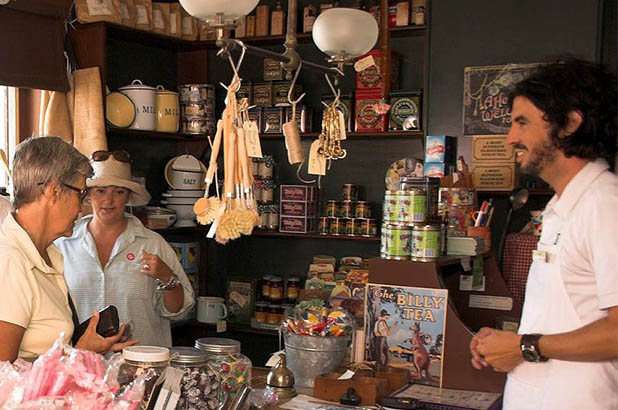
64, the corner store
When you visit the museum it is the corner shop, stocked with products from by-gone days at number 64 Gloucester Street, that greets you. Lollies can be weighed out on scales at the counter, and back-to-basics household items such as straw brooms, sandsoap and shaving brushes can be purchased there. The shop is a reminder of a time before supermarkets and family motor cars when people shopped locally and corner shops were dotted throughout neighbourhoods.
The first tenant of the shop was John Munro, a ginger beer manufacturer of some local note. Stoneware bottles marked J. Munro have turned up quite regularly in archaeology finds around Sydney. We’re not sure if Munro manufactured and bottled his specialty brew in the cellar below the shop or in a larger facility elsewhere, but old fashioned ginger beer can be made at home quite simply in small batches with fresh ginger, some lemons, and instant dried yeast.
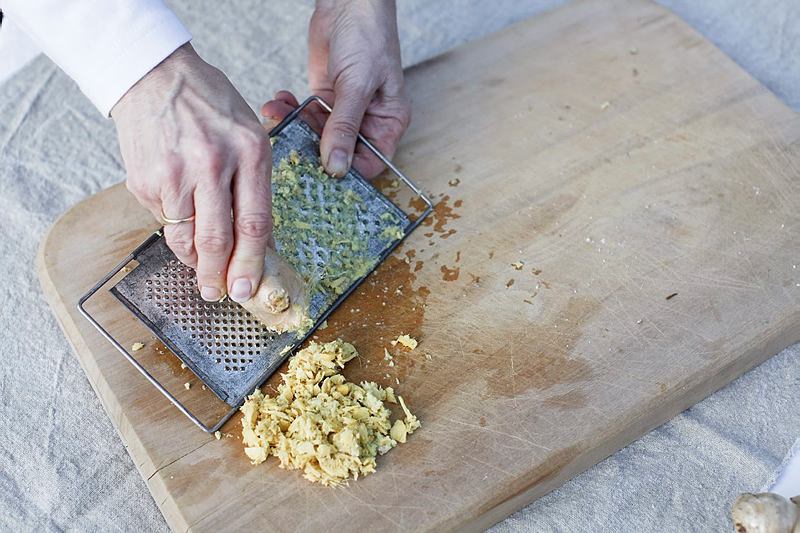
Ginger beer
Ingredients
- 50g fresh young ginger
- 2 lemons
- 3 whole cloves
- 2 teaspoons cream of tartar
- 200g white sugar
- 2.5l boiling water
- 1 packet dried yeast
Note
Adapted from a recipe by Nigel Slater published online and in The Guardian (UK).
This recipe yields approximately 2 litres.
Directions
| Grate the ginger and put in a non-corrosive bowl. Slice the lemons and add to the ginger along with the cloves, cream of tartar and sugar. | |
| Pour boiling water over the mixture and stir until the sugar has dissolved. Allow to cool just enough so you can comfortably hold the knuckle of your little finger in the liquid. | |
| Sprinkle the yeast over the surface and cover the bowl with plastic wrap. Rest overnight to allow the yeast to develop. | |
| Strain into another bowl or large jug using a fine strainer lined with a few layers of muslin, and discard the solids. Decant the liquid into sterilised bottles, being careful to leave a few centimetres between the top of the fluid and the neck of the bottle, and secure the caps. | |
| Leave at room temperature for four days, after which the residual yeast will have settled to the bottom of the bottle. Refrigerate to prevent yeast activity developing further and drink within two weeks. | |
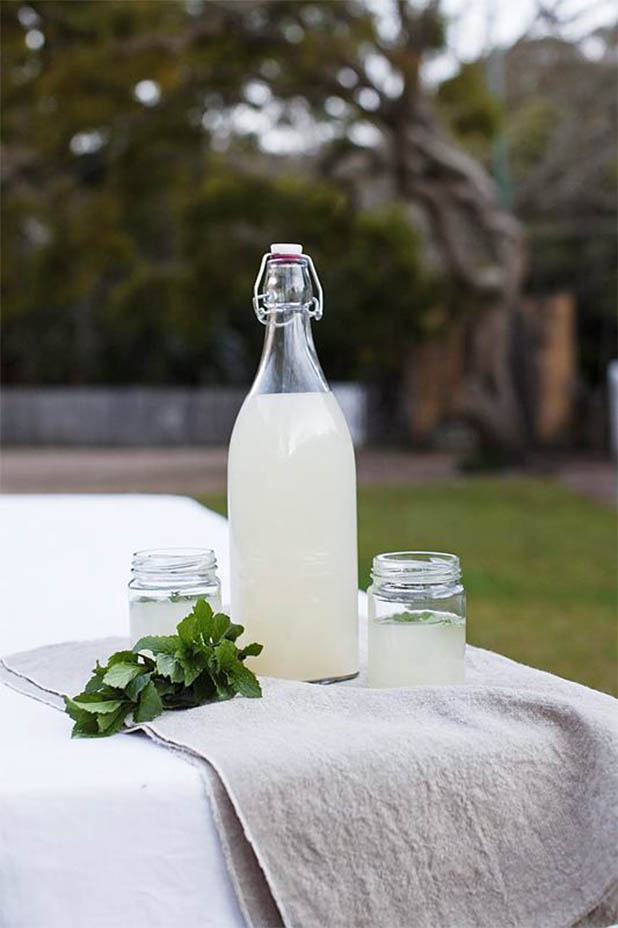
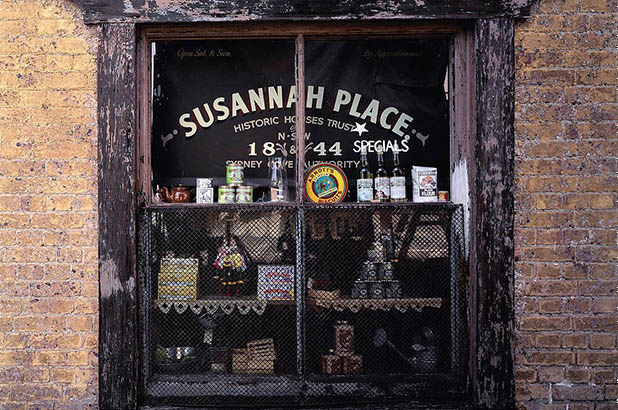
 Print recipe
Print recipe